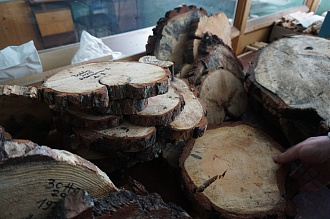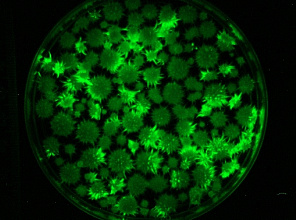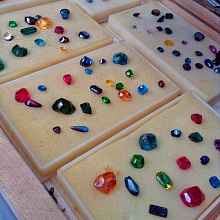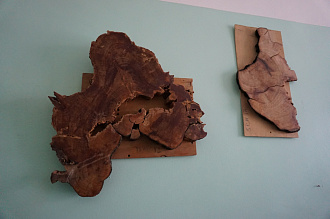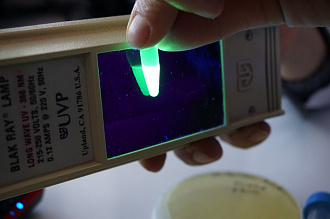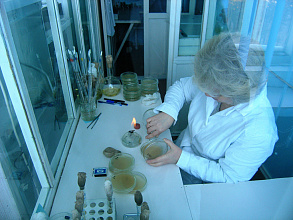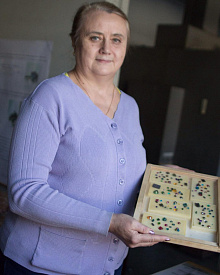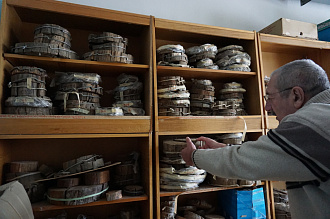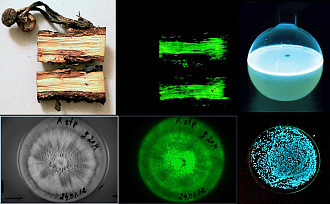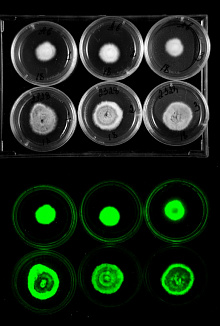Scientific Louvre: why scientists need collections, and what the collections can be like
24 January 2020 г. FRC KSC SB RAS
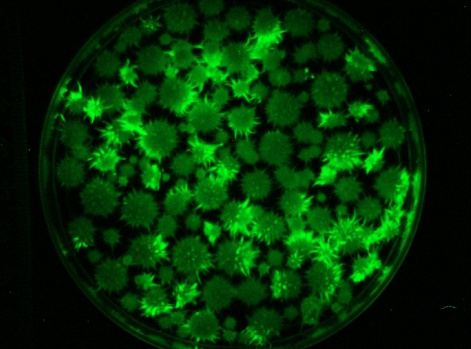
Scientific collections, unlike ordinary ones, are made in order not to admire them, profitably invest money or to satisfy one’s passion for possessing something unique, although they fulfill some of these functions perfectly well with. Their main purpose is to help researchers and reduce the number of white spots in our perception of the world around us. In order to understand why scientists sometimes need to collect strange and things unremarkable for ordinary people, we decided to talk about some of the collection items from the laboratories of the Federal Research Center “Krasnoyarsk Science Center” SB RAS.
Furnace-grown crystals
The L.V. Kirensky Institute of Physics has one of the most beautiful collections of Krasnoyarsk scientists - artificial crystals of various minerals: garnets, hexaferrites, hematites, iron borates and others. Scientists grow all these crystals themselves. “We bake crystals in electric furnaces created in our laboratory. We place a vessel with a solution in the chamber, which is stirred with the help of special rod-holders. Crystals spontaneously nucleate on them and begin to grow. When their size reaches one millimeter, we remove them from the holder. These small crystals are placed in special holes of the holder and are again dipped into the solution. Then, the crystals grow on this seed. The obtained products are not further processed. The way they look is their natural appearance, ” says Irina Anatolyevna Gudim, Candidate of Physical and Mathematical Sciences, senior research associate at the Institute of Physics.
The collection arose spontaneously. Crystals originally grown in the laboratory were used in microwave technology and radar stations. For example, various technical elements were fabricated from garnets: from heads for video recorders to elements of neutron reactors. Then, scientists became interested in the transmission properties of crystals. For these tasks, specialists of the Institute of Physics had to master the production technology not only for black garnets, but also for transparent ones. “Such crystals are suitable for lasers and devices which limit the power. After saturation, the crystal ceases to transmit energy, thus allowing one to limit the power which is supplied through it to the device, ” explains Irina Gudim.
Having learnt how to grow transparent crystals, scientists asked themselves: why not to try to make them colored. And they began to add transition metals and other elements to the samples, which allowed them to color the products. To obtain the red color, manganese is added to the initial solution for growing the crystal; for the emerald color, scientists use chromium or cobalt. By choosing appropriate combinations of elements, Krasnoyarsk scientists were able to create blue garnets which do not occur in nature. “Some crystals, due to the peculiarities of the method of their manufacturing, are obtained in two-colors. Moreover, the border of the transition of one color to another is practically not visible. Achieving such an effect had been considered impossible, but we were able to achieve such a result, ”says Irina Gudim.
There are several items in the collection, which was probably seen by the founder of academic science in Krasnoyarsk, academician Leonid Vasilievich Kirensky. It was at his suggestion that the work on growing crystals in Akademgorodok began. Since the 60s of the last century, samples of ferruginous garnets and perovskites have been preserved in the collection. Unfortunately, many of the rare items were irreversibly sacrificed to science. The scientific collection is not an exhibit frozen in time, but one of the tools used by scientists. When researchers need a particular crystal for a study, it is provided without hesitation. This is easy to explain: it takes months to grow a crystal with desired properties, and sometimes years. The collection, of course, suffers, but it serves the main goal - science.
Indicating lights of bacteria
The Institute of Biophysics maintains a collection of bioluminescent bacteria and fungi. It is registered in the World Federation of Cultural Collections (WFCC) and International Microbial Strain Data Network. Now the collection includes about three hundred luminous cultures of microorganisms from various regions of the oceans - from tropical to polar latitudes. Samples were taken both at the surface and at depths of up to several thousand meters. Not only marine luminous bacteria are stored here, but also genetically modified, luminous strains of Escherichia coli (E. coli) which can glow.
The glow of bacteria and fungi can be seen in the dark with the naked eye. A luminous culture is an excellent indicating light - it stops glowing if treated with some type of toxicant. To preserve luminous bacteria, it is important to maintain organisms in a living state, creating special conditions for them. “Some of the properties of many bioluminescent organisms may be lost in the case of prolonged storage. Therefore, from time to time it is necessary to check their characteristics and reinoculate cultures. For bacteria we have to do it once a month and for mushrooms - once a year. A nutrient medium is placed in sterile dishes. Then, we collect the inoculum from old containers and put the cultures to a new nutrient medium, where they germinate and are stored again until the next reinoculation. If a culture loses its ability to glow, special measures have to be taken to restore this property, ”says Svetlana Evgenievna Medvedeva, candidate of biological sciences, senior researcher at the Institute of Biophysics of the Federal Research Center SB RAS.
The first samples in the collection appeared after the sea expeditions of Krasnoyarsk biophysicists on the legendary Soviet research vessel Vityaz’ in the 1960s. The study of the ocean glow was headed by academician Joseph Isaevich Gitelzon. As in the case of artificial crystals, the life of the collection is closely connected with the demands of scientists. About twenty years ago, Krasnoyarsk biophysicists became interested in the bioluminescence of more complex organisms. In recent years, the collection has been replenished with the mycelium of luminous fungi from Europe, Canada, Vietnam, and Malaysia. There are Siberian honey fungi among the specimens, which can also emit light.
The topic of fungi brought scientists to a number of brilliant scientific discoveries. In 2018, scientists deciphered the bioluminescence system of these organisms, whose principle was previously unknown. Fungi can glow longer and more stable than bacteria, which allows them to be used as biosensors for a long time. “Using luminous fungi, it is possible to estimate the health state of trees. Usually honey fungi live on weak and injured trees. Accordingly, by the luminescence of the wood sample, it is possible to detect the presence of mycelium and determine whether the tree is healthy or not. The method is very simple and can be applied regardless of the time of year or weather, nor does it harm the tree itself, ” says Svetlana Medvedeva.
Over the many years of history, many discoveries have been made using the collection funds. For example, a methodology was developed for biotesting the quality of environment based on natural luminous bacteria and enzymes isolated from them. Materials from the collection are used by students, post-graduate students and scientists from various institutes. Bioluminescent systems isolated from samples are provided to other scientific and educational institutions for further study of such an interesting phenomenon as the glow of living organisms.
Trees are a kind of books on history
There are hundreds of tree cross-sections and cores in the collection of the V.N.Sukachev Institute of Forest. A core is a small cylinder of wood about five millimeters in diameter which is drilled out from a tree trunk using a special borer. In a sense, core samples are much more convenient than cross-sections: they require significantly less time and effort during sampling and do not damage trees much. However, for research, cross-sections are more suitable. Unlike cores, they have complete information about tree rings.
Most of the samples presented are taken in the vast areas of Siberia: from Taimyr to Kamchatka, from the polar border of the forest to the southern territories of Altai. Hard-to-reach places are the most interesting for scientists, and it is there that they go on expeditions. Only in the areas with virgin nature it is possible to obtain interesting and indicative samples of trees. To take such samples, researchers have to travel hundreds and thousands of kilometers.
During field studies, it is sometimes very difficult to get to sample collection sites. They can be located several tens of kilometers from the main routes or at least some roads. The path often runs through burnt areas, dead wood debris or wetlands. The expedition members carry the equipment for collecting dendrochronology specimens: chain saws, fuel and oil for them, repair kits. You cannot jump through swamps with such things ”says Sergey Zhila, Candidate of biological sciences, a research associate at the Institute of Forest FIC KSC SB RAS.
The age of some trees which are present in the collection reaches thousands of years. To determine this, it is necessary to count the annual rings in a tree cross-section or core. But for scientists, the rings are important not only for the tree age to be determined. “The tree rings reveal the state of a tree and conditions in which it grew throughout life. Based on the cross-sections of just a few plants, studying their anatomical structure or composition makes it possible to predict the position of the forest area, whether it was healthy or affected by some disease, and whether the climate was changing at that time, ” says the head of the laboratory of tree ring structure at the Institute of Forest of FIC KSC SB RAS, Candidate of physical and mathematical sciences, Alexander Vladimirovich Shashkin.
Share:

